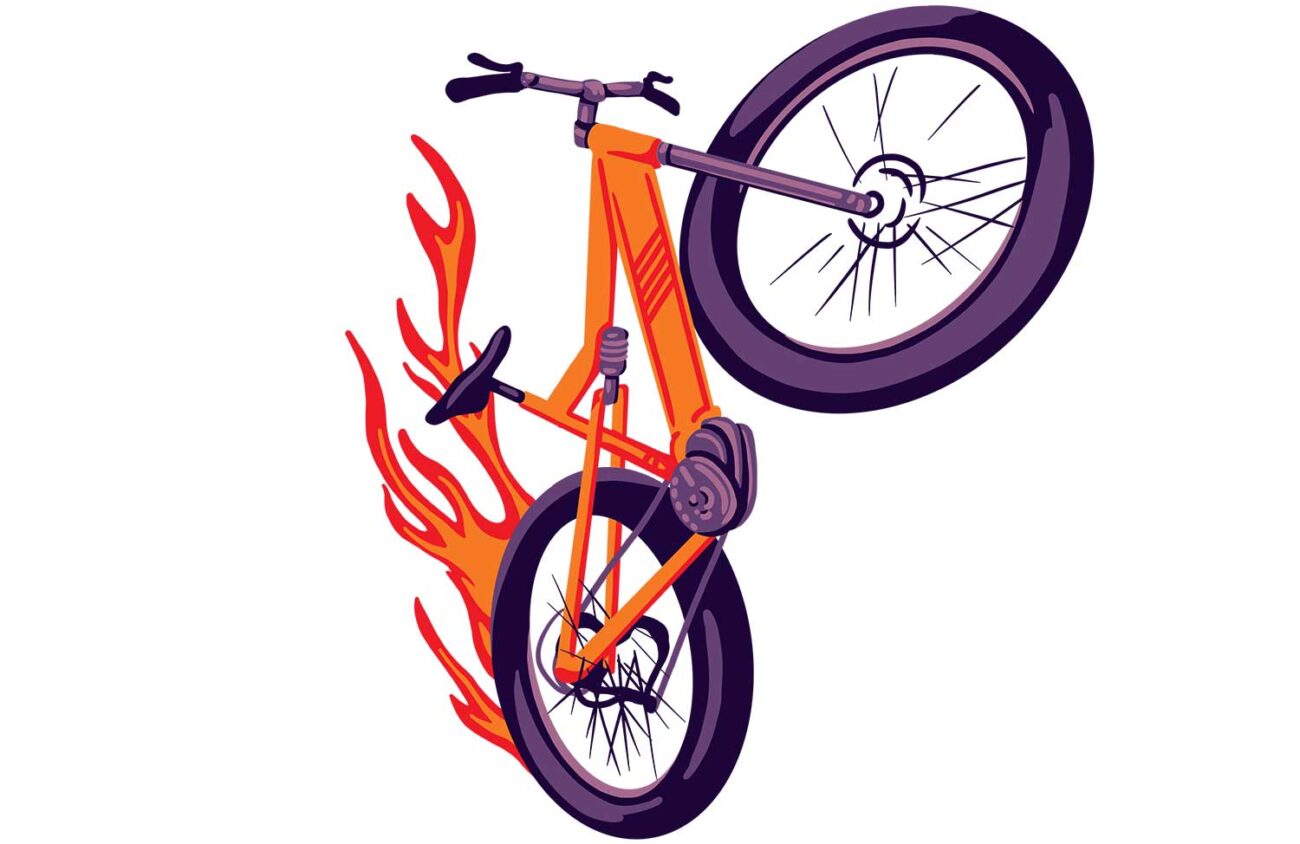Despite fierce criticism from downtown drivers whose commutes have been disrupted by the city’s downtown bike-lane project, city planners have expanded the municipal transportation program to include dedicated e-bike roads and freeways.
Phase One of the project will involve removing one motor vehicle lane from 13th Avenue between Lincoln and High streets and replacing it with an “e-Express” lane, open only to e-bikes.
“We’ve had too many conflicts between up-to-date e-bikes and old-fashioned analog bicycles,” says the city’s newly appointed transportation czar e-Rob Zako. “Those outdated bicycles are already clogging the way for more-efficient e-bikes and their drivers, which, unlike bicycles, are all-electric.”
Projected to be completed in December 2026, the construction project will close much of 13th while workers build the e-Express lane. Once in operation, e-bikes and their riders will have the right of way for the full stretch of the lane, and will be able to legally ride as fast as their bikes will go, without ever stopping. “We don’t want to limit a good thing,” Zako says.
The e-Express lane will run right in front of the downtown fire station, meaning fire trucks and ambulances will have to wait for a break in traffic like anyone else, Zako says. “Yes, there will be delays,” Zako says. “But that’s democracy. And the bikes go so fast that they will cause only the tiniest delay to fire equipment leaving the station. That’s a small price to pay for transportation efficiency.”
Future plans include dedicating an e-bike lane on I-5 between Cottage Grove and the Coburg exit, a distance of about 25 miles. As in Eugene, the e-Express lane would replace one fossil-fuel lane in each direction, both northbound and southbound, and as in town would have no speed limit.
Meanwhile, the city plans to shut down all its traffic signals in a one-square-mile area downtown for the month of May so that traffic engineers can install new signals that include a blue light in addition to the traditional red, yellow and green. Under the new transportation plan, all traffic must come to a stop and drivers must shut off fossil-fuel engines for five full minutes anytime the traffic lights turn blue. This will allow e-bike riders easy access to their e-bikes, even if they’re parked across a busy street, and give fossil-fuel drivers the opportunity to reflect on the harm they are causing to the environment.
“Eugene will soon be famous,” Zako said, “for its innovative new ‘Blue Light District.’”
